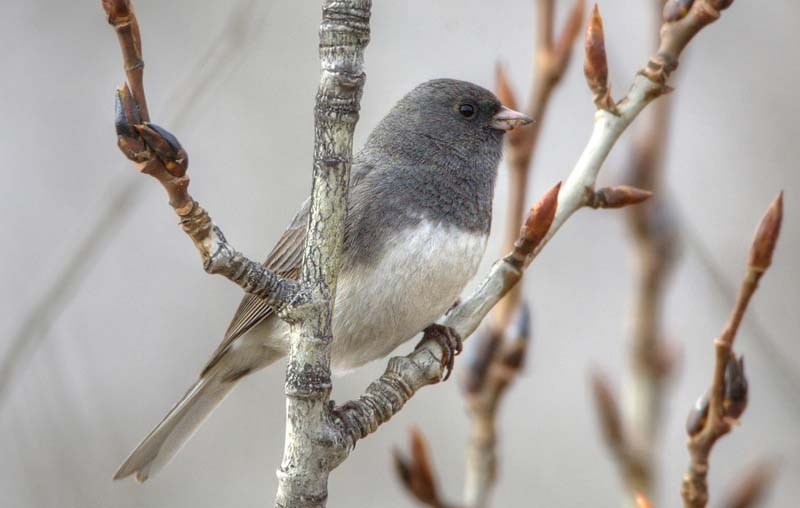St. Albert could see a swarm of dark-eyed juncos this month in time for the annual Christmas bird count, says the city’s count co-ordinator.
Local birder Alan Hingston put out a call for volunteers this week for the upcoming St. Albert Christmas Bird Count. The annual event counts up all the birds in the city as part of a national effort to track trends in avian populations.
Hingston, the count co-ordinator, hopes to get about 160 people out counting birds on Dec. 28. About 40 of those would be bush-beaters, prowling the streets and countryside for rare finds, while the rest would watch feeders at home. “It’s quite a bit easier to be a feeder watcher,” he notes, as you usually can stop after an hour.
The count itself lasts all day, Hingston says, and occasionally includes sightings of rare birds spotted in the three days before and after the count.
Past counts have uncovered some rare finds. Counters spotted their first northern saw-whet owl since 2002 last year, for example, and the first Eurasian collared-dove in count history in 2011.
Count results vary wildly from year to year. St. Albert had a record number of house finches last year, for example (164), and a surprise visit from some mallards and a white-throated sparrow.
“The bird that seems to be in good numbers this winter is the dark-eyed junco,” says Hingston, which is known for its dry-slate back, white front, black eyes and pink beak. Local birders report seeing 15 to 20 of these birds at their feeders already – he’s had about 10, and usually gets none.
“They’re very dependent on people feeding them,” Hingston notes. “They’ll hang around under pine trees where they scratch in the snow for seed.” You can recognize them by the white outer tail feathers they flash while in flight.
About 48 dark-eyed juncos showed up in last year’s count – the average is 35.
Redpolls, crossbills and other cone-eaters are so far in short supply, Hingston continues. “I thought it was going to be an excellent year for them because there’s lots of cones on the trees,” he explains, but that’s true for trees elsewhere too. “So far, they haven’t been showing up.”
About 735 redpolls were spotted in the 2012 count.
About 161 people participated in last year’s count, Hingston’s records suggest. To join the count, call Hingston at 780-459-6389.




